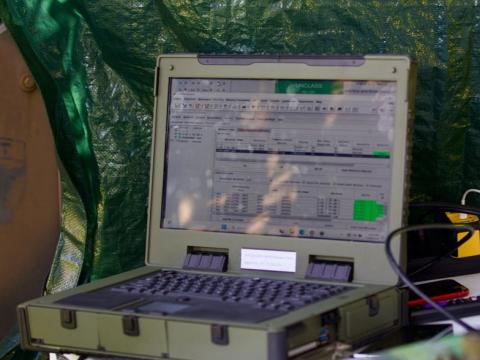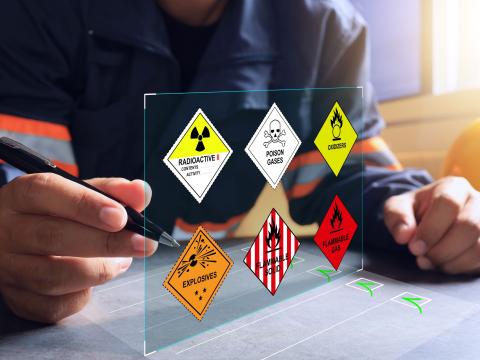Data Fabric Weaves Modernized Fires Mission Thread
As part of its effort to modernize the fires mission thread, the U.S. Army is overhauling two systems critical to providing sensor data to weapon systems to more effectively engage battlefield targets.
Those two systems are the Advanced Field Artillery Tactical Data System (AFATDS) and the Joint Automated Deep Operations Coordination System (JADOCS), which will be replaced by the Joint Targeting Command and Coordination System (JTC2S). The updated systems will provide critical information to weapon systems through the data fabric being developed under the Rainmaker project.
AFATDS provides fully automated support for planning, coordinating, controlling and executing fires with mortars, field artillery cannons, rockets and missiles, close air support, attack aviation and naval surface fire-support systems. It interoperates and integrates with more than 80 different battlefield systems, including Navy and Air Force command and control weapon systems and some international fire-support systems.
AFATDS is a decades-old system that uses multiple computer languages, including Ada, which is nearly extinct. “It uses about 15 different program languages all piled on top of each other, many millions of lines of code, to include Ada. We’re rewriting all of the AFATDS code in a modern software language,” says Col. Matthew Paul, USA, the new mission command project manager within the Army’s Program Executive Office for Command, Control and Communications-Tactical. “It’s a pretty significant level of effort to rewrite all that code, to go back in time—20 plus years—and to understand the architecture and to reverse engineer what has been done and factor it into a clean architecture with Java-based software.”
The AFATDS overhaul is expected to be complete in 2023 and will take a lot of analysis and testing along the way. “In an endeavor like this we wouldn’t wait until the end to test. You code a little, and then test a little to make sure you got it right. That’s what’s driving the schedule,” Col. Paul explains.
JADOCS, meanwhile, is a command-and-control tool that helps provide strategic coordination and situational awareness at the operational and tactical levels of combat. The system provided real-time tracks, target databases and service-specific fires information into a single software application.
Col. Paul’s team is in the early stages of replacing the system with the more contemporary JTC2S. The Army published a request for information in July to solicit ideas from industry about capabilities, system requirements and state-of-the-art technologies.
“We’re still iterating on requirements with Fort Sill, and we anticipate those requirements will be approved by this summer,” Col. Paul reports. “As soon as we can align the requirements to funding, we’ll begin the program.”
JTC2S will provide about 20 or 30 percent more capabilities than its predecessor, Col. Paul estimates. “JADOCS is based on old software technologies, so it’s not very scalable from a data perspective. It was data-centric for its time, but not today, especially when we’re looking at near-peer competitors, a lot more data in the ecosystem, and a lot more targets to prosecute.”
The biggest difference will be the ability to quickly pair the most appropriate and readily available weapon system to a target. “That’s very data intensive. We want to do that very quickly in an automated or near-automated fashion, and to do that at a great scale. That’s something that JADOCS is pretty limited on today,” Col. Paul explains.
Both modern systems will feed sensor information to the data fabric being developed under the Rainmaker project led by the Army’s Command, Control, Communications, Computers, Cyber, Intelligence, Surveillance and Reconnaissance (C5ISR) Center.
Data fabric technology stitches together a variety of information sources and unique data formats, ranging from modern sensor arrays to legacy systems designed for specific functions like logistics or aviation, according to Army documentation. It overlays them with common interfaces and services using open standards so the systems can share information without custom translators. In doing so, the fabric creates a larger pool of data that is more enriched, synchronized and transparent, and routes the right data to the operator who needs it.
For the second consecutive year, the data fabric is included in the Army’s Project Convergence campaign of learning, which includes experiments and exercises designed to help define what technologies will be used in future wars and how they will be used. The data fabric could transfer out of the lab in 2023.
“The value proposition that Rainmaker brings in PC 21 [Project Convergence 2021] is to enable that sensor-to-shooter thread. Rainmaker is going to play a big role in [joint all-domain command and control] to discover data in the ecosystem and distribute it where it needs to go to enable the kill chain,” Col. Paul offers.





Comments